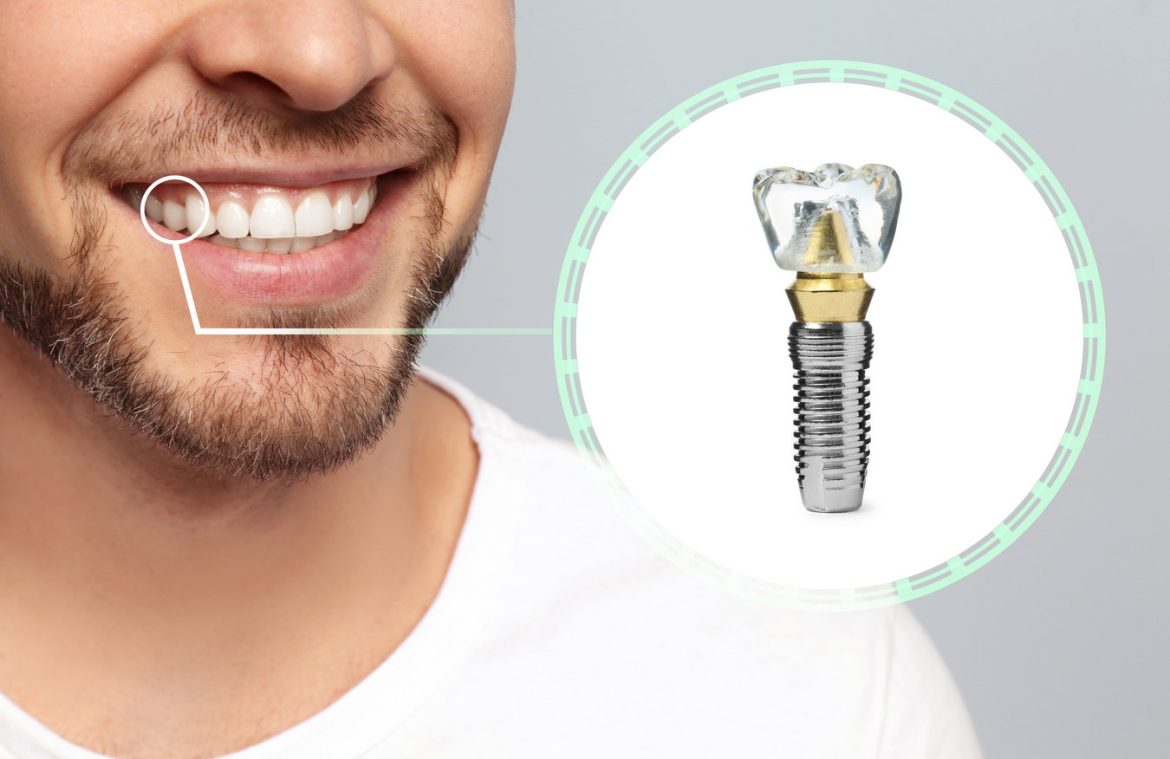
Dental implants are artificial replacements for the root of a tooth, supporting permanent dental prostheses, which are made to last a lifetime. These artificial roots are attached to the bone below the gums where they become one with the jawbone. A crown is placed on top of the implant for a long-lasting and natural smile. Many dentists and patients prefer dental implants because they offer the same function as natural teeth and also help prevent jawbone atrophy. Dental implants can be used to replace a single missing or damaged tooth or even to restore an entire smile.
Το ήξερες…
That about 30 million people live without natural teeth in one or both jaws? But more and more dentists are choosing dental implants as a means of replacing them. The American Academy of Dental Implantology reports that 3 million people today have dental implants—a number that is growing rapidly by about 500,000 per year. Modern titanium implants were first developed in the 1950s, but archaeologists have determined that the ancient Egyptians and Mayans were the first cultures to implant artificial teeth.
Συχνές ερωτήσεις
Μπορεί να είστε κατάλληλος για οδοντικά εμφυτεύματα εάν λείπει ένα ή περισσότερα δόντια, εάν υπάρχουν σπασμένα και γενικά δόντια που δεν υπάρχει δυνατότητα αποκατάστασή τους με οποιοδήποτε άλλο συντηρητικό τρόπο και έχετε σχετικά καλή γενική υγεία. Ο μόνος τρόπος για να προσδιορίσετε αν τα εμφυτεύματα είναι κατάλληλα για εσάς, είναι να προγραμματίσετε ένα ραντεβού με τον Δημήτριο Σπηλιόπουλο για να προσδιορίστεί αν έχετε επαρκή οστική υποστήριξη καθώς και υγιή ούλα που θα υποστηρίξουν τη νέα δομή των δοντιών.
Η τοποθέτηση οδοντικών εμφυτευμάτων είναι μια διαδικασία πολλαπλών βημάτων που συνήθως διαρκεί μεταξύ 3 και 9 μηνών για να ολοκληρωθεί. Ξεκινάει με μια χειρουργική διαδικασία κατά την οποία τοποθετείται μια ράβδος τιτανίου στην περιοχή του/των ελλειπόντων δοντιών. Τα ούλα συρράπτονται πάνω από το εμφύτευμα, όπου θα παραμείνει για αρκετούς μήνες, καθώς θα γίνεται η ενσωμάτωσή του με το οστό της γνάθου. Λόγω της φύσης της τοποθέτησης του εμφυτεύματος και του μέσου όρου της διαδικασίας που κυμαίνεται από 1 έως 2 ώρες, θα πρέπει να γίνει αναισθησία της περιοχής. Μετά από το χρονικό διάστημα που απαιτείται για την οστεοενσωμάτωση (ενσωμάτωση του εμφυτεύματος με το οστό), θα έρθετε για το επόμενο στάδιο της θεραπείας το οποίο είναι η αποκατάστασή του με στεφάνη (θήκη).
Είναι φυσιολογικό να παρατηρήσετε κάποια ενόχληση αλλά και διόγκωση της περιοχής μετά από μια επέμβαση οδοντικού εμφυτεύματος. Ωστόσο, η φλεγμονή και ο πόνος μπορεί να αντιμετωπιστούν με φαρμακευτική αγωγή η οποία θα βοηθήσει στην μείωση των συμπτωμάτων. Μπορεί να σας ζητηθεί να φάτε μόνο μαλακές τροφές μέχρι να θεραπευθεί η χειρουργιμένη περιοχή.










